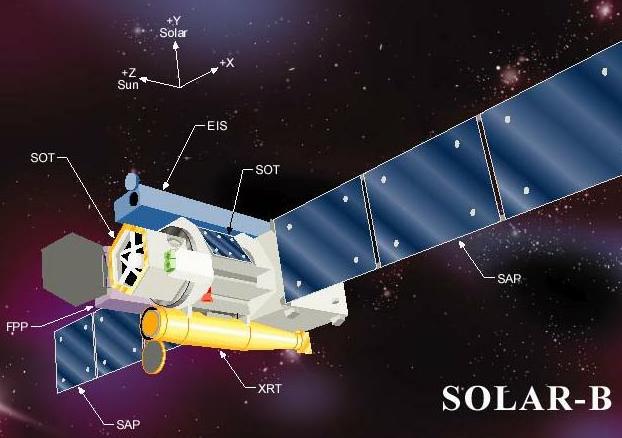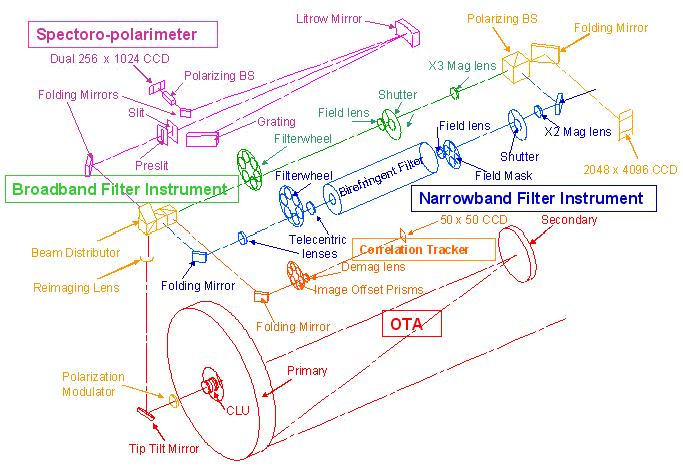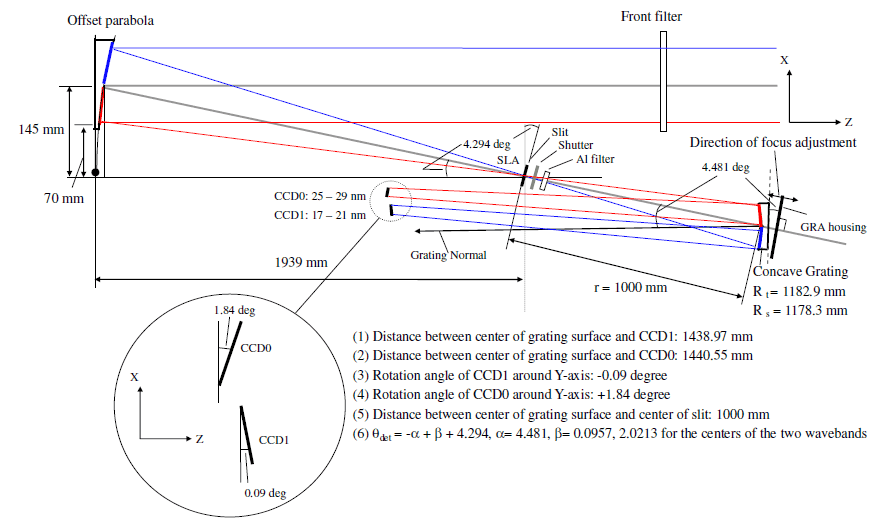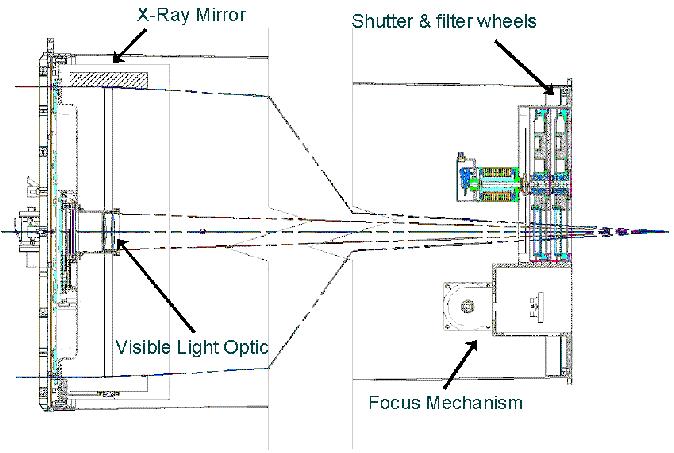National Aeronautics and Space Administration
Marshall Space Flight Center
Instruments
SOT -- Solar Optical Telescope
Japan PI: Dr. Yoshinori Suematsu; NAOJ
US PI: Dr. Ted Tarbell; Lockheed Martin SAL
Partner Institutions:
National Astronomical Observatory of Japan (NAOJ)
NCAR High-Altitude Observatory (HAO) in Boulder, CO
Mitsubishi Electric Corporation (MELCO)
NASA MSFC
JAXA
Websites:
sot.lmsal.com/ &
hinode.nao.ac.jp/en/for-researchers/instruments/sot/
Highlights: 50 centimeter aperture telescope combined with a camera within the Focal Plane Package used to measure photospheric vector magnetic fields. The telescope achieves diffraction-limited resolution (~0.2 arcsec) to observe the dynamics of photospheric and chromospheric fine structures in optical wavelengths. The three optical instruments available are the Broadband Filter Imager (BFI) used to make images of the photosphere and chromosphere, the Narrowband Filter Imager (NFI) used to produce magnetogram and dopplergram images of the solar surface, and the Spectropolarimeter (SP) which is the most sensitive vector magnetograph in space.
EIS -- Extreme ultraviolet Imaging Spectrometer
Japan PI: Dr. Tetsuya Watanabe; NAOJ
UK PI: Dr. Leonard Culhane; Mullard Space Science Laboratory (MSSL)
US PI: Dr. George Doschek; Naval Research Laboratory (NRL)
Partner Institutions:
National Astronomical Observatory of Japan (NAOJ)
University College London (UCL)
University of Oslo
Rutherford Appleton Laboratory (RAL)
Website:
msslxr.mssl.ucl.ac.uk:8080/SolarB/Solar-B.jsp &
hinode.nao.ac.jp/en/for-researchers/instruments/eis/
Highlights: 3 meter long parabolic imaging spectrometer with a focal length of 1.9 meters and mirror diameter of 150 millimeters. Monochromatic images of the transition region and corona can be taken at high cadence (as fast as ~1 image per second) using a slot. High spectral resolution images (~2 arcsecs) can be obtained by rastering with a slit. EIS is optimized to measure plasma flow velocity, temperature, and density in the region between the photosphere and corona using a multitude of spectral lines.
XRT -- X-Ray Telescope
Japan PI: Dr. Taro Sakao; ISAS/Japanese Aerospace Exploration Agency (JAXA) US PI: Dr. Ed DeLuca; Smithsonian Astrophysical Observatory (CFA/SAO)
Partner Institutions:
National Astronomical Observatory of Japan (NAOJ)
NASA Marshall Space Flight Center (MSFC)
Montana State University (MSU)
NorthWest Research Associates (NWRA) Colorado Division
Websites:
xrt.cfa.harvard.edu/ &
hinode.nao.ac.jp/en/for-researchers/instruments/xrt/
Highlights: Modified Wolter I grazing incidence telescope with high X-ray resolution (~1 arcsec). XRT can provide full-Sun images including the inner corona at temperatures greater than 2 million Kelvins using several narrow band filter sets. G-band images are also taken for alignment purposes for the whole spacecraft. Combining XRT observations with SOT's photospheric images allows for the study of flare triggers and solar eruptive events from the solar surface out into the solar atmosphere.
- NASA Contact: Adam Kobelski
- Page Last Updated: Tuesday, 20 June 2017





